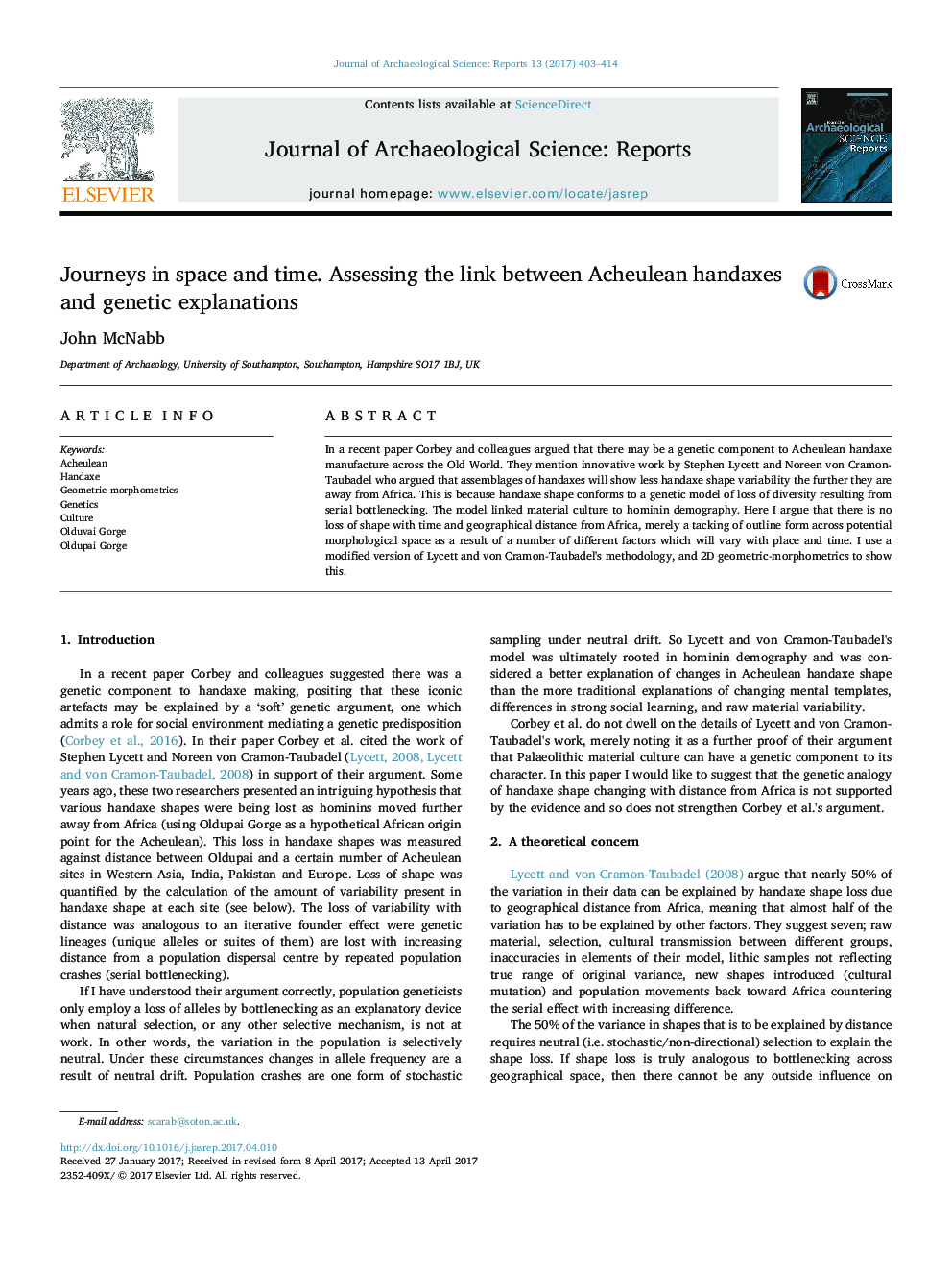| Article ID | Journal | Published Year | Pages | File Type |
|---|---|---|---|---|
| 5112452 | Journal of Archaeological Science: Reports | 2017 | 12 Pages |
Abstract
In a recent paper Corbey and colleagues argued that there may be a genetic component to Acheulean handaxe manufacture across the Old World. They mention innovative work by Stephen Lycett and Noreen von Cramon-Taubadel who argued that assemblages of handaxes will show less handaxe shape variability the further they are away from Africa. This is because handaxe shape conforms to a genetic model of loss of diversity resulting from serial bottlenecking. The model linked material culture to hominin demography. Here I argue that there is no loss of shape with time and geographical distance from Africa, merely a tacking of outline form across potential morphological space as a result of a number of different factors which will vary with place and time. I use a modified version of Lycett and von Cramon-Taubadel's methodology, and 2D geometric-morphometrics to show this.
Related Topics
Social Sciences and Humanities
Arts and Humanities
History
Authors
John McNabb,
